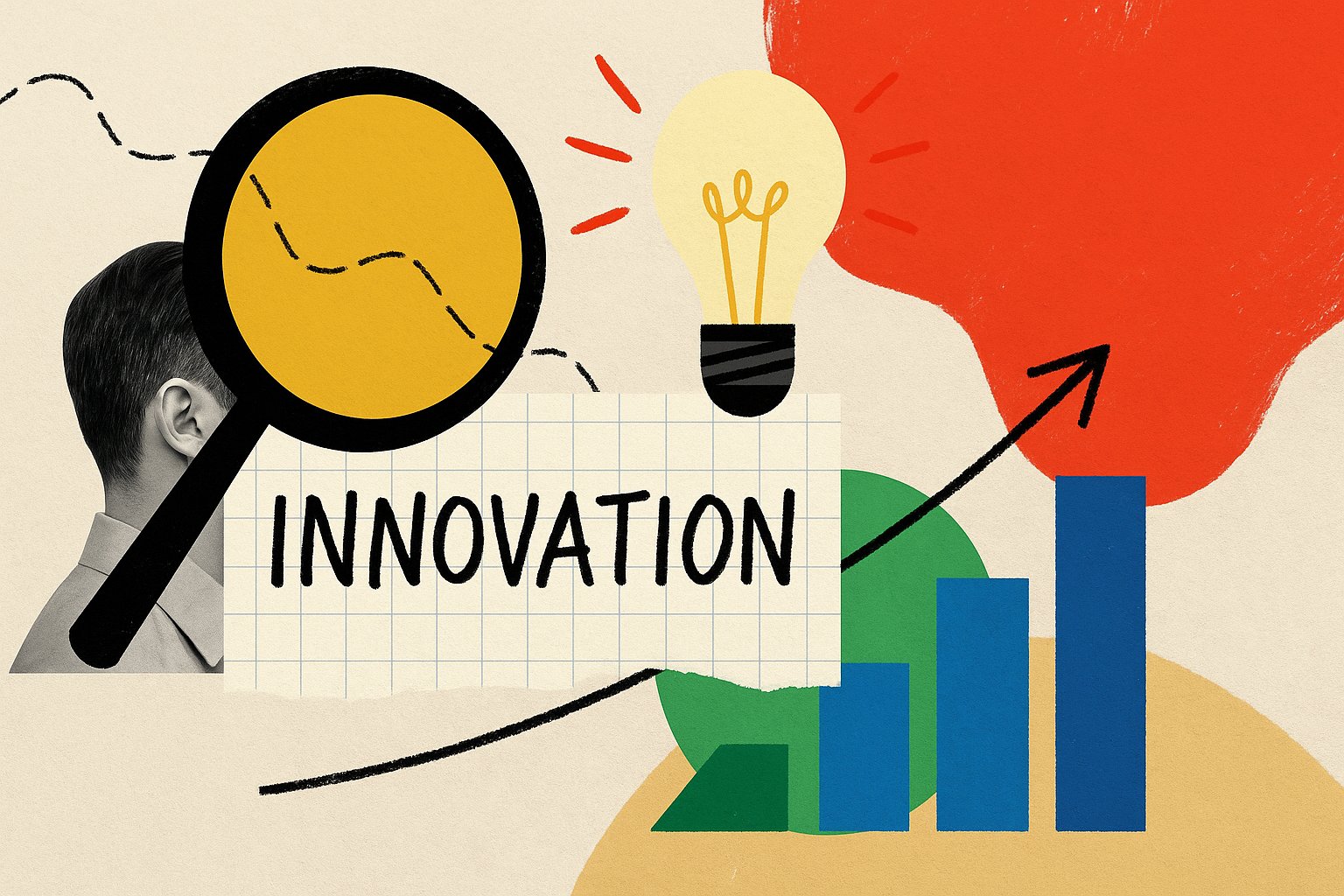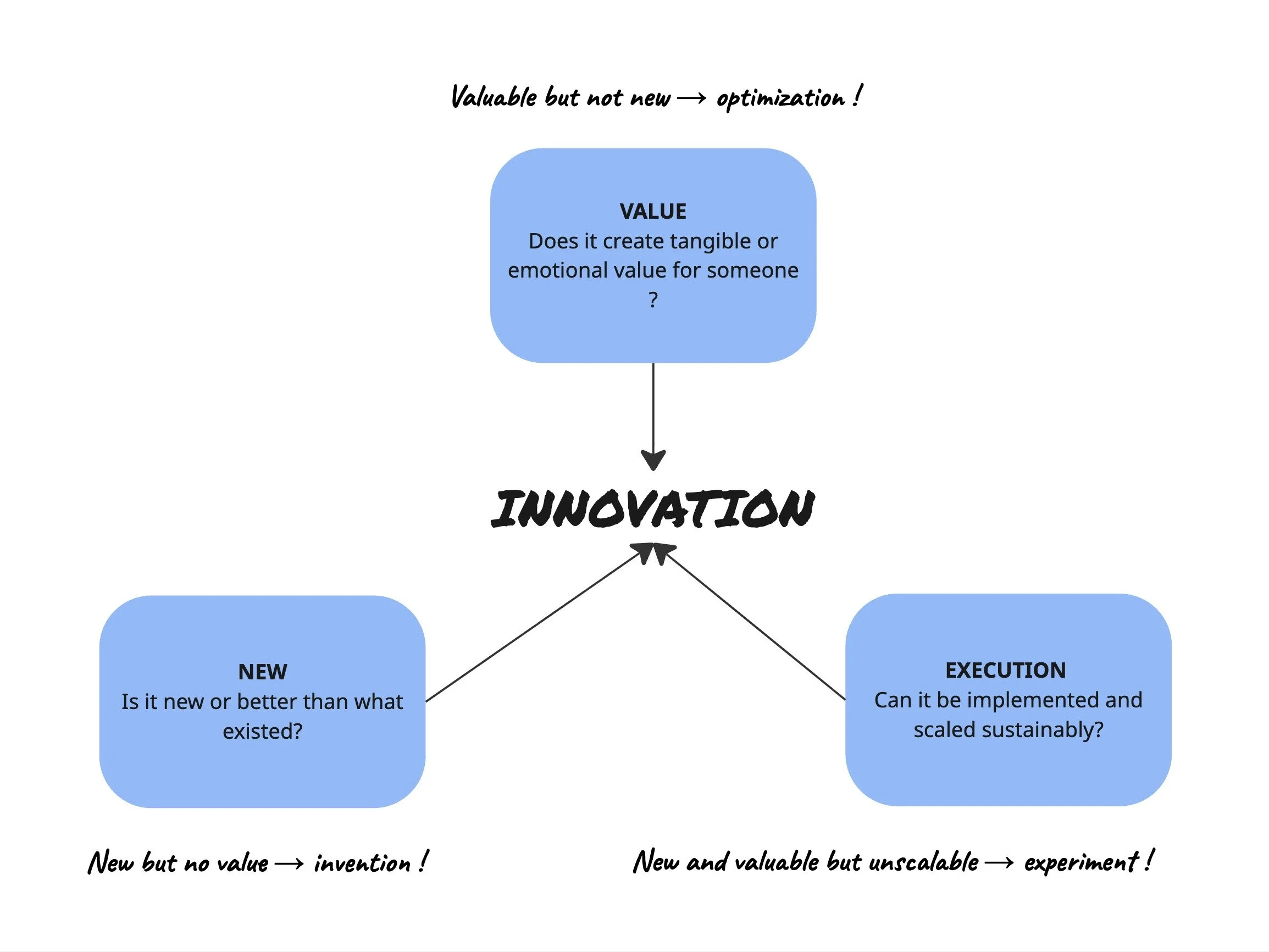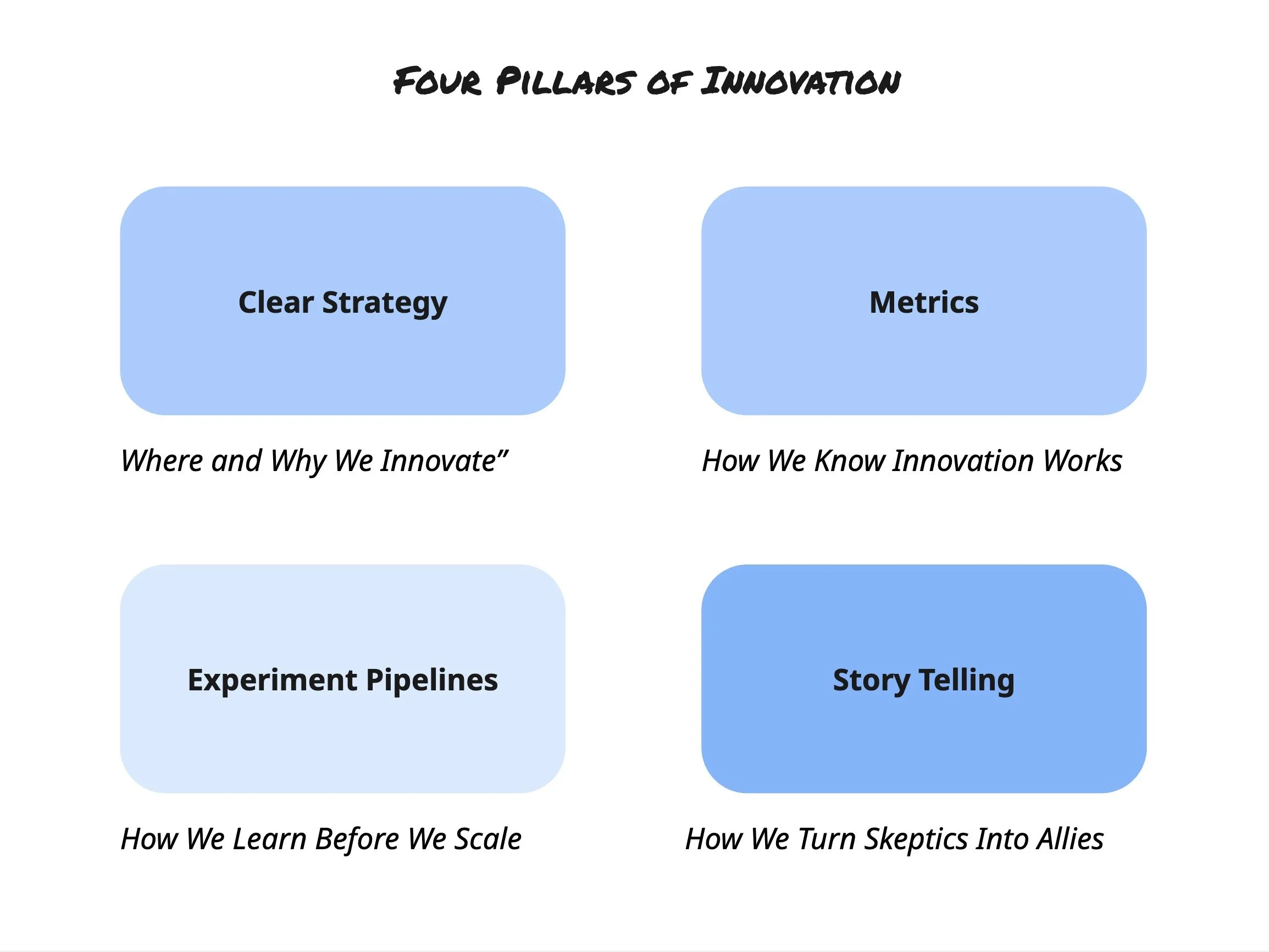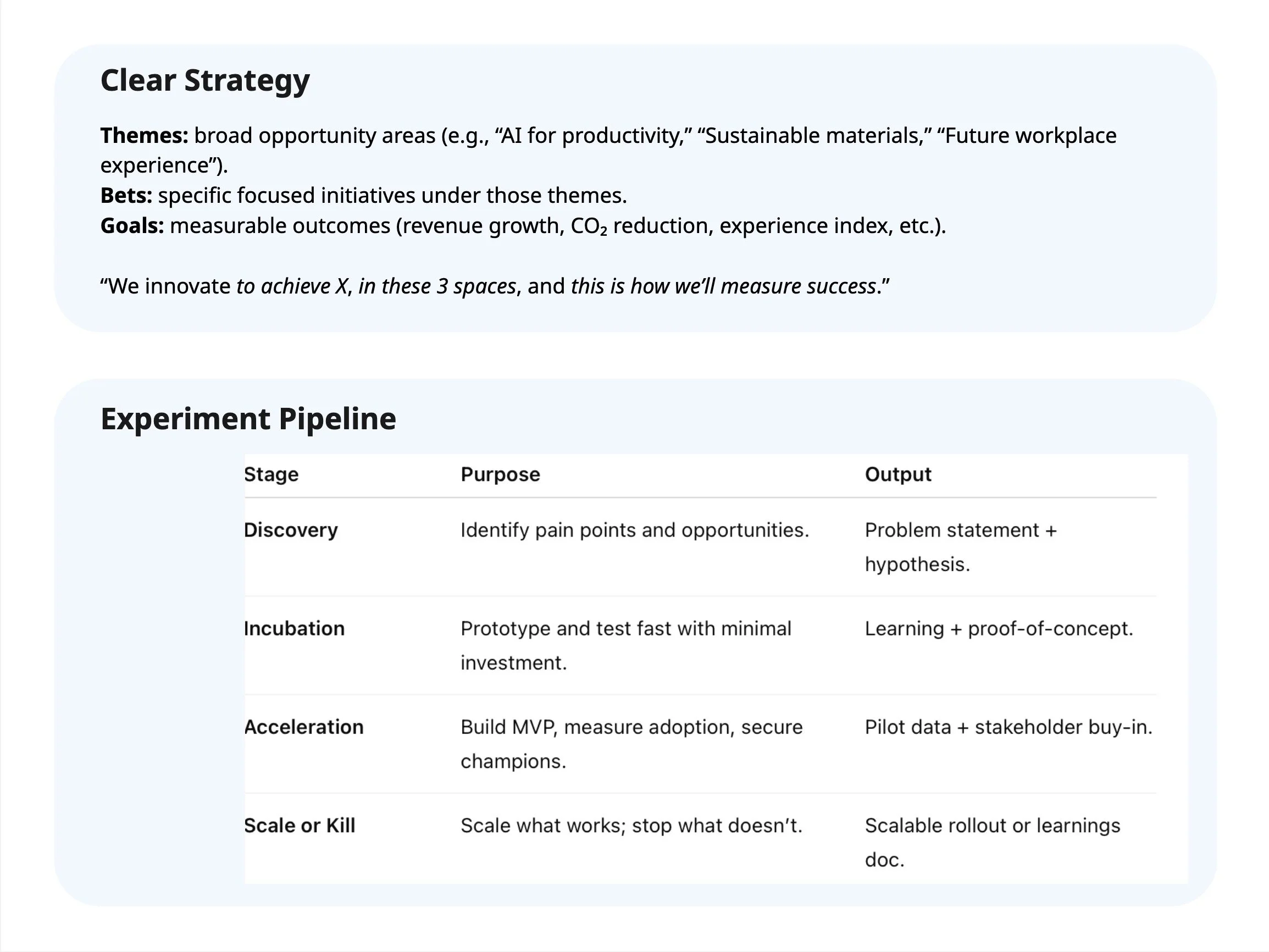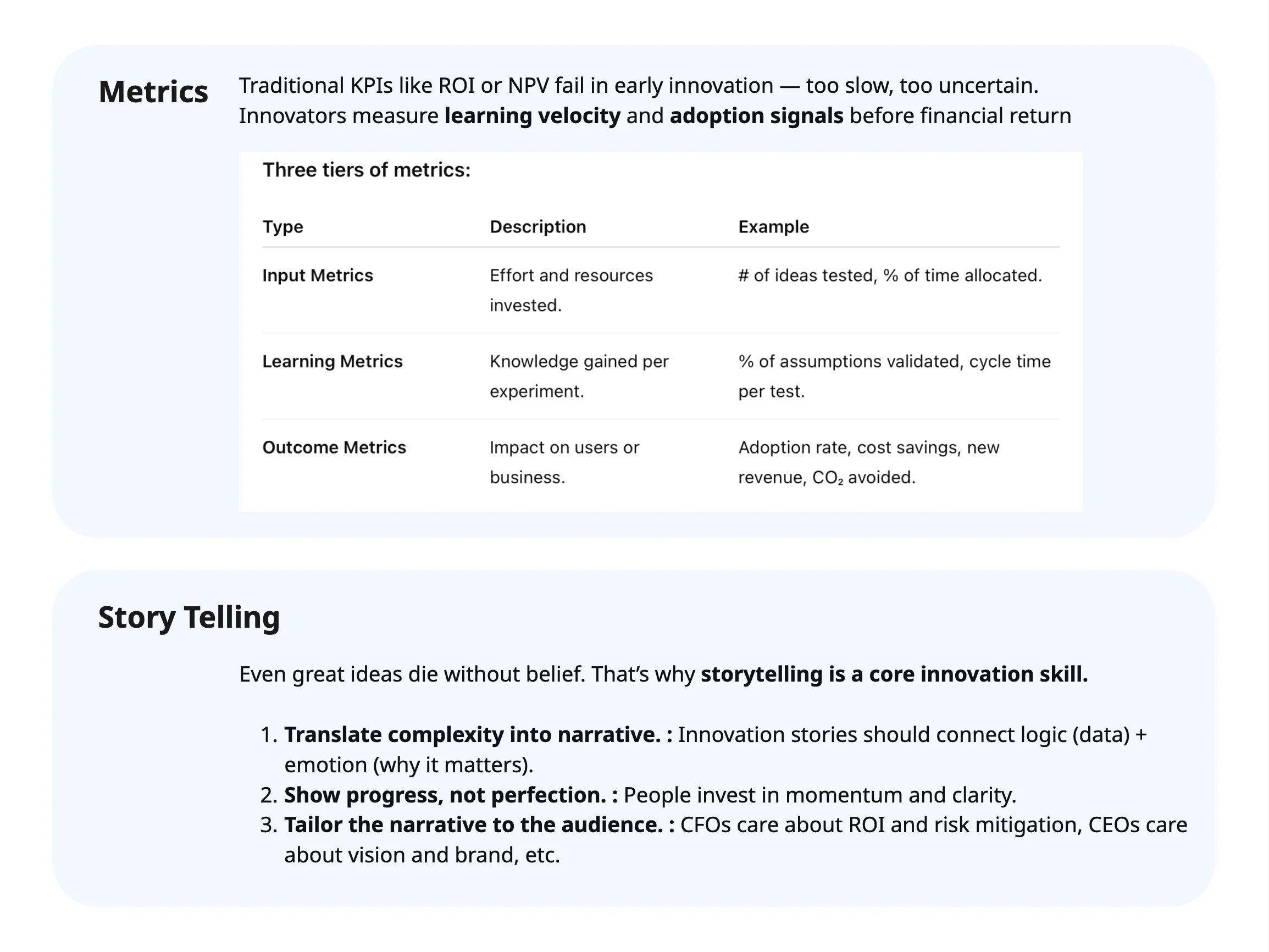The Architecture of Change
After years inside organisations that spoke passionately about Innovation, I began to notice a pattern. Everyone wanted new ideas, but few had the structure to make them real. Some people were brilliant at imagining possibilities but struggled to bring them to life. Others excelled at scaling and optimising, yet hesitated when faced with uncertainty. Somewhere between these two worlds, imagination and execution, progress either grows or fades.
Real change rarely comes from a single breakthrough. It comes from rhythm. The consistent loop of learning, testing, and refining that turns ideas into value. The question is not only what’s new, but what works and lasts.
To understand this rhythm, I often look at innovation through three lenses: newness, value, and execution.
Something new but without value is an invention.
Something valuable but not new is optimisation.
Something new and valuable but unscalable is an experiment.
Only when all three align does meaningful innovation occur.
At Wireframes, we use this model to help teams clarify where their ideas stand. It makes innovation less abstract and more actionable.
Four Pillars That Make Change Work
Behind every successful innovation effort, there are four foundations that keep the rhythm steady: strategy, pipelines, metrics, and storytelling.
Clear Strategy : Define where and why you innovate. Set themes, focus areas, and measurable goals so everyone knows what success looks like.
Experiment Pipelines : Move ideas through stages: discovery, incubation, acceleration, and scale or stop. Learn fast before you scale.
Meaningful Metrics Measure learning before profit. Track inputs (effort), learning (insight gained), and outcomes (impact achieved).
Storytelling and Alignment : Translate data into belief. A good story helps stakeholders see potential, not just performance.
When these four pillars work together, innovation stops being a buzzword and becomes a system. One that helps teams move from vision to implementation with clarity and confidence.
We have seen how mature teams approach this differently. In places such as Google, innovation is treated less as a creative burst and more as an ongoing experiment. These teams do not chase novelty; they design for learning. They move through clear stages: discovery, incubation, acceleration, and scale or stop. At each point, the goal is not to be right but to understand faster, to test assumptions, learn from what does not work, and grow from it. That rhythm of learning is what separates invention from progress.
Even the best systems fail without one essential skill: storytelling. Over time, we have learned that innovation does not spread because of the data; it spreads because of the story behind it. A good story helps people see potential, not just problems. It gives logic emotion and direction. When told well, it helps a CFO understand the return, an HR leader see the cultural impact, and a CEO feel the vision. Storytelling is not decoration. It is the bridge between imagination and belief.
Layers of Progress
Not all change happens at the same speed or depth. In our work, we map it into three layers: core, adjacent, and transformational.
Core Innovation makes existing systems smoother. Faster fit-outs, simpler workflows, or cost savings.
Adjacent Innovation extends current capabilities into new territories, like turning workplace analytics into a service.
Transformational Innovation redefines the system entirely: imagining the “office” as a network of creative hubs powered by AI.
Understanding these layers helps organisations balance ambition with reality. It’s not about choosing one; it’s about keeping all three in motion, like gears that power long-term progress.

